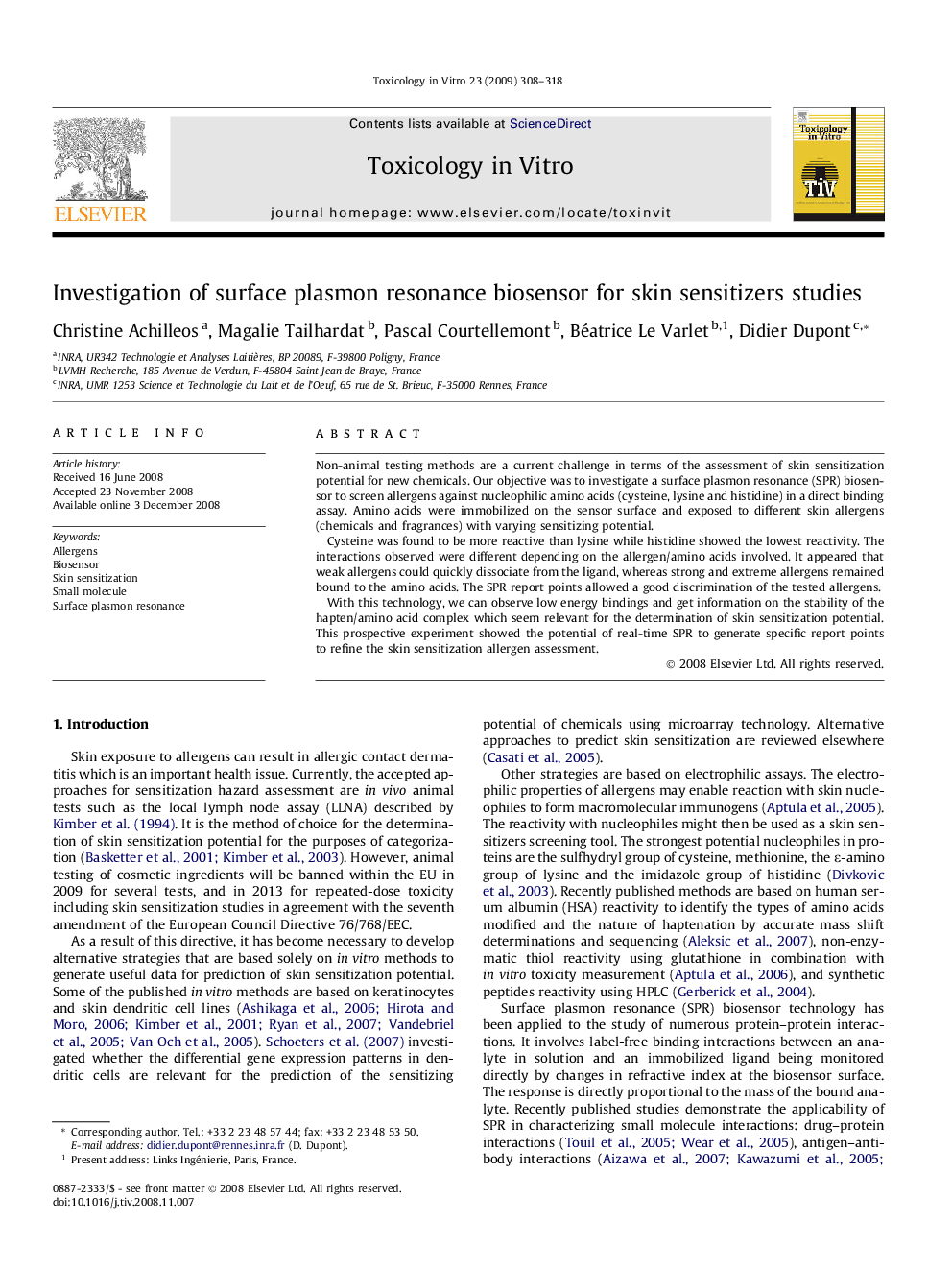| Article ID | Journal | Published Year | Pages | File Type |
|---|---|---|---|---|
| 2603136 | Toxicology in Vitro | 2009 | 11 Pages |
Non-animal testing methods are a current challenge in terms of the assessment of skin sensitization potential for new chemicals. Our objective was to investigate a surface plasmon resonance (SPR) biosensor to screen allergens against nucleophilic amino acids (cysteine, lysine and histidine) in a direct binding assay. Amino acids were immobilized on the sensor surface and exposed to different skin allergens (chemicals and fragrances) with varying sensitizing potential.Cysteine was found to be more reactive than lysine while histidine showed the lowest reactivity. The interactions observed were different depending on the allergen/amino acids involved. It appeared that weak allergens could quickly dissociate from the ligand, whereas strong and extreme allergens remained bound to the amino acids. The SPR report points allowed a good discrimination of the tested allergens.With this technology, we can observe low energy bindings and get information on the stability of the hapten/amino acid complex which seem relevant for the determination of skin sensitization potential. This prospective experiment showed the potential of real-time SPR to generate specific report points to refine the skin sensitization allergen assessment.
